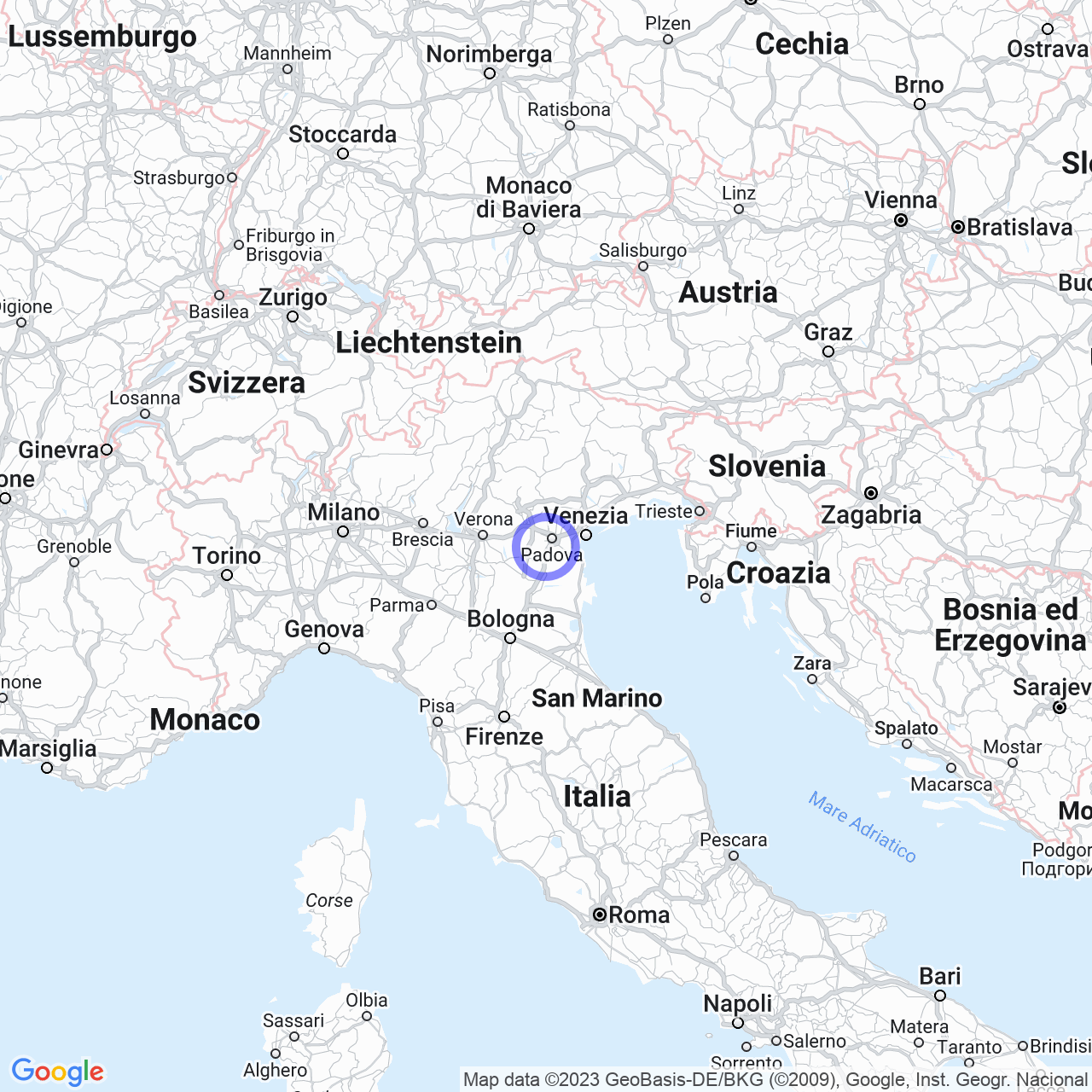Montegrotto Terme
Journey to Montegrotto Terme
If you enjoy peace and tranquility, Montegrotto Terme might be the perfect place for you. This town of 11,357 inhabitants in the province of Padua, Veneto, is the ideal destination for those seeking moments of relaxation, thanks to its thermal waters that have been flowing from the depths of the earth for millennia. Let's see together what makes Montegrotto so special.

Physical Geography
Territory
Montegrotto Terme is located at the eastern end of the Po Valley, at the foot of the Euganean Hills, about 30 km from Venice. The municipal territory is flat and crossed by several canals and waterways.
The municipality borders Abano Terme to the north, Battaglia Terme to the south, Due Carrare to the east and Galzignano Terme and Torreglia to the west.
Climate
The climate of Montegrotto Terme is characterized by cold winters and very hot and humid summers, favoring the formation of fog during winter and autumn. Precipitation is evenly distributed throughout the year, but during the summer they are often characterised by thunderstorms and hail.
Origins of the name
Traditionally it is believed that the name of Montegrotto derives from the Latin "Mons Aegrotorum", which means "mountain of the sick". The center of Montegrotto has a hill where the sick were treated benefiting from the therapeutic effects of mud and thermal water. In the Middle Ages, the city was called "San Pietro Montagnone". In 1921 it was detached from the Municipality of Battaglia and became an independent municipality, changing its name to Montegrotto Terme in 1934.
History
Pre-Roman Era
There are no certain traces of prehistoric populations in the territory of Montegrotto Terme. Some findings suggest the presence of Euganean populations during the Neolithic and Bronze Ages. The first documented use of thermal water dates back to the Iron Age, when groups settled along the shores of a lake between Colle Montagnone and Monte Castello. This establishment is presumed to have had religious functions since the ancient Venetians already knew the healing properties of thermal water.
Roman Era
During the Roman era, Montegrotto became an important spa center, thanks to the construction of numerous spas and the realization of a complex aqueduct system to supply nearby cities. Moreover, there are numerous testimonies of the Roman presence in the area, such as the Roman bridge on the homonymous stream.
Medieval Era
In the Middle Ages, Montegrotto became part of the territory of the Montagnone family, which also controlled Battaglia, the municipality to which it belonged. In 1921, Montegrotto became an autonomous municipality.
Modern and Contemporary Era
After World War II, Montegrotto sees a remarkable increase in thermal tourism. In the 1980s, the city underwent a strong urbanization, with the construction of numerous hotels and villas. Today Montegrotto is a renowned thermal resort internationally.
The Thermal Baths of Montegrotto Terme
Spa History
The Thermal Baths of Montegrotto Terme have been used since ancient times. They were renovated and expanded during the Roman era, becoming one of the main spa centers in Europe. In the sixteenth century, the Thermal Baths were visited by important personalities, such as Francesco Petrarca and Caterina Cornaro. In the nineteenth century, they were again renovated and expanded, and were frequented again by the personalities of that era.
Benefits of Thermal Waters
The water of the Thermal Baths of Montegrotto is rich in minerals and trace elements, which have a therapeutic effect on different pathologies, such as joint, muscle, respiratory, dermatological problems, and many others. In addition, thermal water has a relaxing and toning effect on the skin, making it soft and luminous.
Services and Activities
The Thermal Baths of Montegrotto Terme offer visitors a wide range of services and activities. There are indoor and outdoor thermal pools, saunas, Turkish baths, Kneipp paths, and many other wellness activities. Moreover, there are also medical services, such as physiotherapy and diagnostics, for those who need specific treatments.
Museums and Places of Interest
Museum of Art Glass
The Museum of Art Glass in Montegrotto Terme collects a vast collection of glass objects from different parts of the world. The museum was founded in 1982 by the potter Oreste Abate to promote the production of high-quality glass objects and to make known the history and technique of glass processing.
Butterfly Arc - Butterfly House
The Butterfly Arc - Butterfly House is a tourist attraction that houses a variety of butterflies from different parts of the world. The house is located inside a 2,000-square-meter green area and is equipped with a climate-controlled greenhouse that creates ideal conditions for butterflies to live and reproduce.
Roman excavations
The Roman excavations of Montegrotto Terme are an archaeological area that includes the remains of a Roman villa from the 1st century BC. The excavations were carried out in the 1960s and 1970s of the 20th century, and brought to light the remains of the villa and a Roman theater. Today, the excavations are open to the public and represent an interesting destination for lovers of ancient history.
Conclusions
Montegrotto Terme is a charming thermal resort that has a lot to offer its visitors. In addition to the thermal baths, there are many other tourist attractions, such as the Museum of Art Glass, the Butterfly Arc - Butterfly House, and the Roman excavations. If you are looking for a place to relax and dedicate yourself to your physical and mental well-being, Montegrotto Terme might be the right choice for you.
